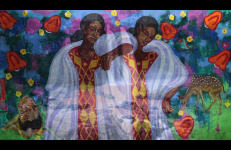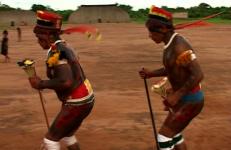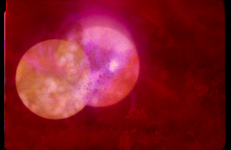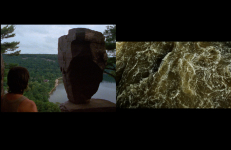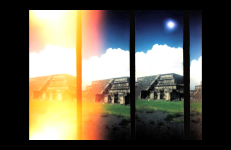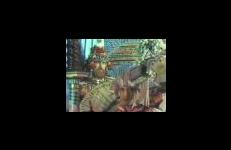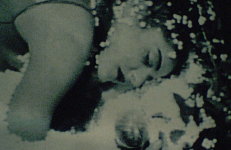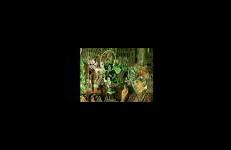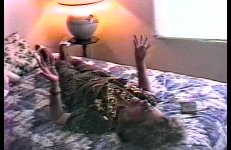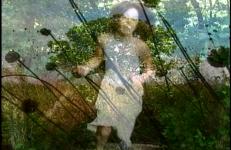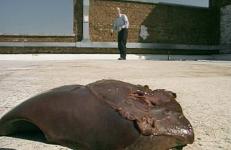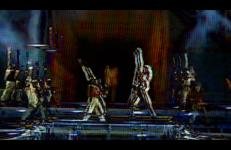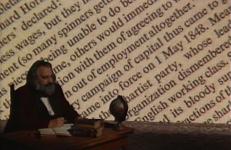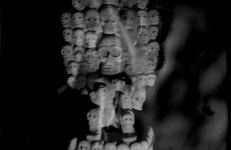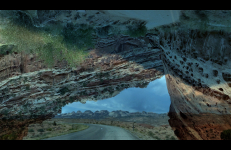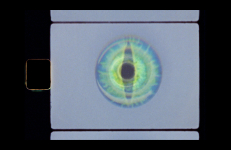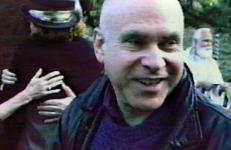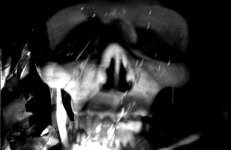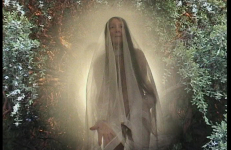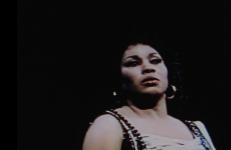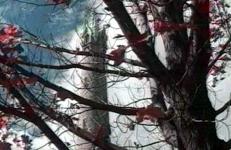Hidirtina (Sisters) is based on a mythology from Eritrea and northern Ethiopia. It is part of a larger story collection project that began in 2004. Folklorist Alan Dundes describes mythology as "a story that serves to define the fundamental worldview of a culture by explaining aspects of the natural world and delineating the psychological and social practices and ideals of a society". For this project, I sent out an open call for folklore to a Habesha diaspora (Ethiopian and Eritrean) New York City community email group.
Myth
A myth illustrated on the stones of a waterfall, the reconstruction of a great communal hut, the attempt to recover objects kept for years in a museum in Manaus. In IAUARETÊ, Waterfall of the Jaguars the Tariano Indians, of the North-western Amazon, after decades of missionary catechism, decide to make a cultural record for future generations.
Direction: Vincent Carelli
Photography: Vincent Carelli and Altair Paixão
Editing: Joana Collier
Production: IPHAN / Vídeo nas Aldeias
A myth illustrated on the stones of a waterfall, the reconstruction of a great communal hut, the attempt to recover objects kept for years in a museum in Manaus. In IAUARETÊ, Waterfall of the Jaguars the Tariano Indians, of the North-western Amazon, after decades of missionary catechism, decide to make a cultural record for future generations.
Direction: Vincent Carelli
Photography: Vincent Carelli and Altair Paixão
Editing: Joana Collier
Production: IPHAN / Vídeo nas Aldeias
It's the time of celebration and merriment in the Alto Xingu. The dry season is coming to an end. The smell of the damp earth is mixed with the sweet perfume of pequi. But it has not always been like that: if it had not been for a death, the pequi would possibly not exist. Linking the past to the present, Kuikuro filmmakers tell a tale of dangers and pleasures, of sex and betrayal, where men and women, hummingbirds and alligators build a shared world.
Direction: Takumã and Maricá Kuikuro
Photography: Takumã, Mariká, Amuneri, Asusu, Jairão and Maluki
Irradiation is the thermal emanation of vital heat, the ancestral support that immerses beings in the solar blood. This is the immersion of beings in the bloody solar flow that gives the intense color of our present time. Part of Tonalli.
The Island Weights is a two-channel synchronized video installation. A composite of the two channels presented side by side in one video is available from Video Data Bank for educational use only.
The scales of the snake refract a trance and invocation. In the epicenter, the pyramids join Izcóatl's battle, the Obsidian Serpent propagates an exhortation: all the dances against the war.
This title is also available on the compilation What Was Always Yours and Never Lost.
Stephen Varble began Journey to the Sun as a series of performances with projected slides in 1978. After becoming notorious for unauthorized costume performances on Soho streets in the mid 1970s, Varble receded from his public persona at this time. Deriving from his identification with his idol, the reclusive actress Greta Garbo, and informed by the spiritual practice of Subud, Varble began writing an allegorical epic about a musician, the Grey Crowned Warbler, who undergoes tribulation and metamorphosis on a journey to transcendence.
La Intolerancia en el Jardín de las Mentiras y el Pecado (The Intolerance in the Garden of Lies and Sin) recounts the rupture of the relationship between friends due to the ambition of the prized object. The baroque and the renaissance are stylistic references that Bobe uses in his compositions and this will be no exception. Mythology, Botticelli, a black ephebe, and The Three Graces are the ingredients that make up this work.
The performance artist Stephen Varble spent the last five years of his life working on an epic, unfinished performance-turned-video titled Journey to the Sun (1978-1983). Only partially complete and under constant revision, this complex work combined Varble’s history of making costumes for performances with his fantastic stories involving metamorphosis and martyrdom. In 1982, Varble decided to make a “prelude” to Journey to the Sun, combining existing footage with new video taken in Riverside Park in New York City.
Poet Leticia Plotkin's final poem, intended to praise the ancient deities who control one's fate, turns instead into a bitter damnation scribbled in venom.
“To take back the gold that was stolen from us – this is the object of our actions.”
Lettres du Voyant is a documentary-fiction about spiritism and technology in contemporary Ghana, which attempts to uncover some truths about a mysterious practice called "Sakawa" — internet scams mixed with voodoo magic. Tracing back the scammers’ stories to the times of Ghanaian independence, the film proposes Sakawa as a form of anti-neocolonial resistance.
Little Spirits is about a young girl who plays a trick on a friend, unaware or uninterested in the possible consequences.
This title is also available on Cecelia Condit Videoworks: Volume 2
In this surreal experimental narrative, there’s something wrong with a patch of sky. As it travels over Southern England, objects cast up into it come down hugely enlarged, bloated. Meanwhile in London, the patch is in fact a troubling scab on a crippled old man’s head. As the scab develops, all he can do is wait, going through the changes, led on gently by the idiot-savant son with his childlike multiple identities.
In the film Mad Ladders, the prophetic ramblings of an unseen narrator recount fantastical dreams of the coming Rapture, as crystalline imagery of rolling clouds gives way to heavily-processed video of moving stage sets from The American Music Awards telecasts of the 1980s and early 1990s. Blooming and pulsing in and out of geometric abstraction, this swirling storm of rising curtains, spinning set pieces, and unveiled pop idols forms an occult spectacle, driven by its impassioned narrator and an 8-bit leitmotif.
Kipnis describes this tape as "an appropriation of the aesthetics of both late capitalism and early Soviet cinema—MTV meets Eisenstein—reconstructing Karl Marx for the video age.” She presents a postmodern lecture delivered by a chorus of drag queens on the unexpected corelations between Marx’s theories and the carbuncles that plagued the body of the rotund thinker for over thirty years. Marx’s erupting, diseased body is juxtaposed with the “body politic", and posited as a symbol of contemporary society proceeding the failed revolutions of the late 1960s.
This is the invocation to the ancestral god of the underworld, the ancient annihilator, which preserves the ritual inertia of the bones and stones.
“Hopinka’s video Mnemonics of Shape and Reason (2021) traverses the memory of a place and space visited by the artist. Employing an original syntax of storytelling, the artist interweaves scattered and reassembled landscapes with layers of captured audio, poetic text, and music. A rhythmic account of the spiritual implications of colonial plunder, Hopinka’s fluid reflections transmute ideas of spiritual malleability tied to land, sky, sea, myth, place, and personhood.”
Commissioned by ICA Miami.
An audiovisual being who has the power to shape shift. Part of shamanic materialism.
Kuchar makes it to the Isis Oasis resort just in time to catch the marriage vows of his friends Rebecca and Steve. Transposing the myth of Isis in their union, Kuchar tries to make sense of this recreated paradise, this gathering of God’s creatures, and the fates of Rebecca von Hettman and Charlie Sheen—in this humid, steamy, stained story of the transmigration of souls.
This is the gaze that is reflected in the dark obsidian mirror.
‘ODDS AND ENDS’ is a dazzling patchwork of moods, lost and found, for the eye to savor.
In 1985 the great soprano Leontyne Price sang the title role in Verdi’s Aida as her farewell opera. After the ‘O patria mia’ aria, the audience breaks into a four-minute applause. Oh My Homeland is the third in a series of minimal single shot 16mm films. It’s a film about representation, art, and material exchange. It’s a film about endings. It’s a film about identity, love, power, patriotism and the transcendent potential of art through the viewing of a face receiving adoration.
In Oh, Rapunzel, when Rapunzel flees the tower, Condit's mother leaves her home for an independent living facility and a freedom that she has never known. A collaboration between Cecelia Condit and Dick Blau. Music by Stephen Vogel. Re-edited in 2008.
This title is also available on Cecelia Condit Videoworks: Volume 1.
In Oh, Rapunzel, when Rapunzel flees the tower, Condit's mother leaves her home for an independent living facility and a freedom that she has never known. A collaboration between Cecelia Condit and Dick Blau. Music by Stephen Vogel. Re-edited in 2008.
This title is also available on Cecelia Condit Videoworks: Volume 1.




